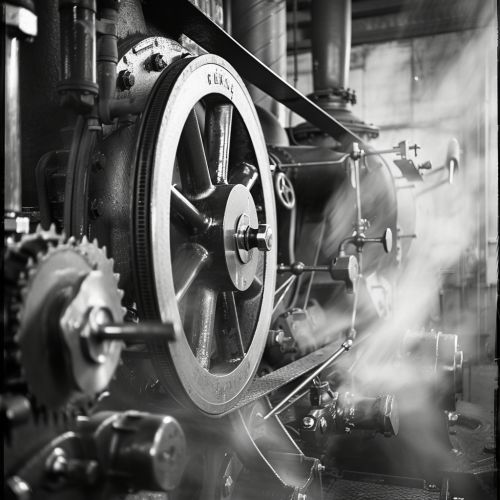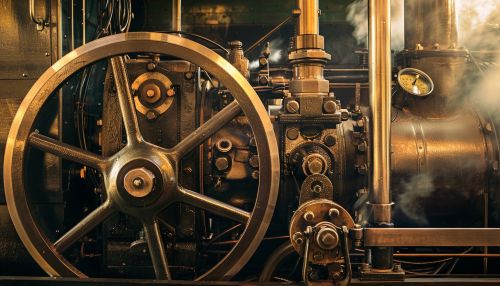Steam engine
Introduction
The steam engine is a heat engine that performs mechanical work using steam as its working fluid. The steam engine uses the force produced by steam pressure to push a piston back and forth inside a cylinder. This pushing force is transformed, by a connecting rod and flywheel, into rotational force for work.


History
The earliest known rudimentary steam engine and reaction steam turbine, the aeolipile, is described by a Greek mathematician and engineer named Hero in the 1st century AD. In the following centuries, the few engines known as the steam pump were developed, essentially as toys. It wasn't until 1698 that the first practical steam engine was developed by Savery.
Development
The development of the steam engine propelled the Industrial Revolution in Britain and the world. The steam engine was used to pump water out of coal mines, enabling them to be deepened beyond groundwater levels. The steam engine also powered the industrial machinery, locomotives and ships, transforming every aspect of society.
Types of Steam Engines
There are several types of steam engines, differentiated by the details of their design and operation. These include the Newcomen engine, the Watt engine, and the steam locomotive engine.
Newcomen Atmospheric Engine
The Newcomen atmospheric engine was the predecessor to the Watt engine and was one of the most important early uses of the steam engine. It was an improvement over Savery's steam pump, using a piston as proposed by Papin.
Watt Steam Engine
The Watt steam engine, an improvement of the Newcomen engine, was the driving force behind the Industrial Revolution. It was the first type of steam engine to make use of a separate condenser. It was a vacuum or "atmospheric" engine using steam at a pressure just above atmospheric to create a partial vacuum beneath the piston.
Steam Locomotive Engine
The steam locomotive engine was a type of railway locomotive that produces its pulling power through a steam engine. These locomotives are fueled by burning combustible material – usually coal, wood, or oil – to produce steam in a boiler.
Impact on Society
The steam engine had a significant impact on society, particularly during the Industrial Revolution. It was a key invention that enabled all kinds of machinery to be powered, from vehicles to manufacturing equipment. It also led to the development of the railway system, which had a profound effect on commerce and travel.
Modern Use
Today, steam engines are used primarily in power generation plants. Although they are not used as widely as in the past, they still play a significant role in the production of electricity.
